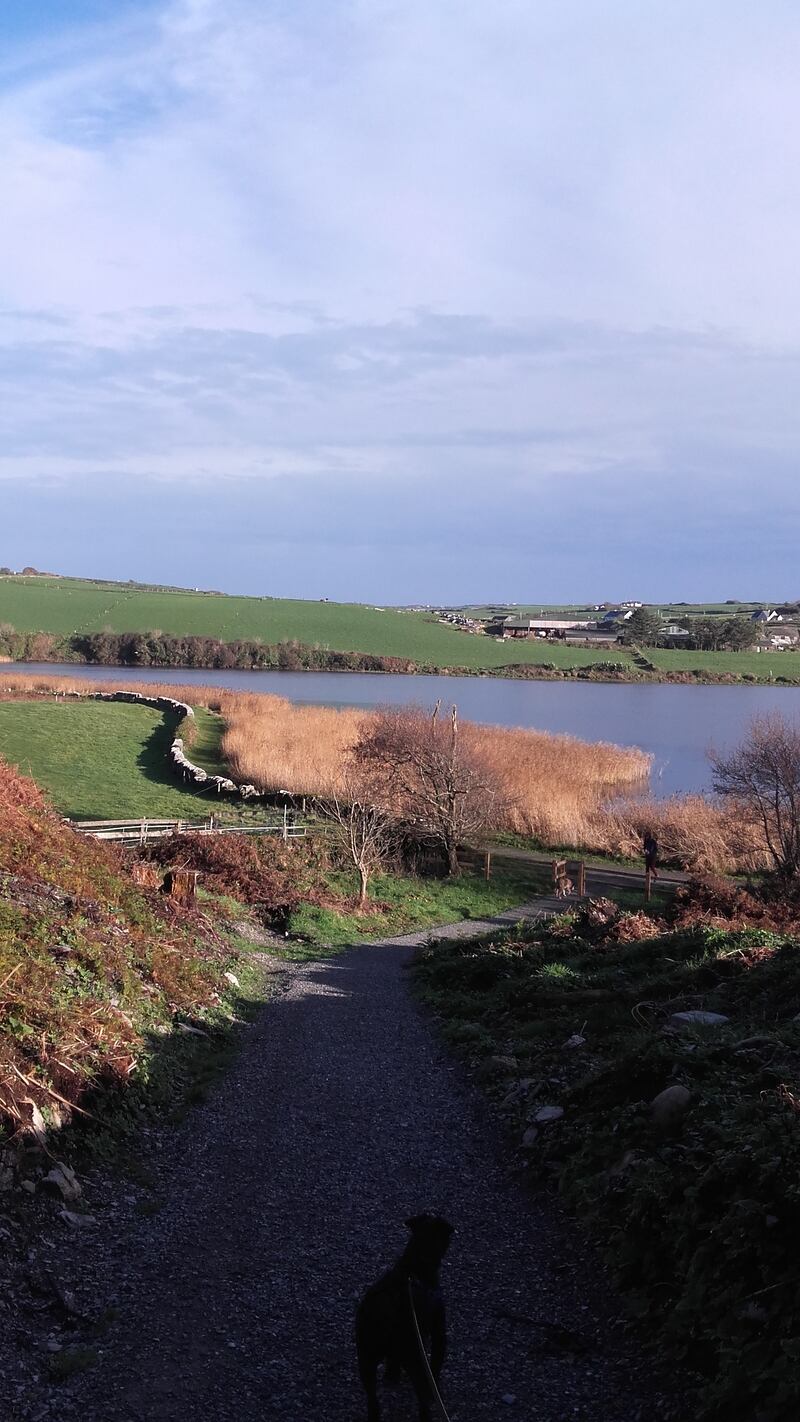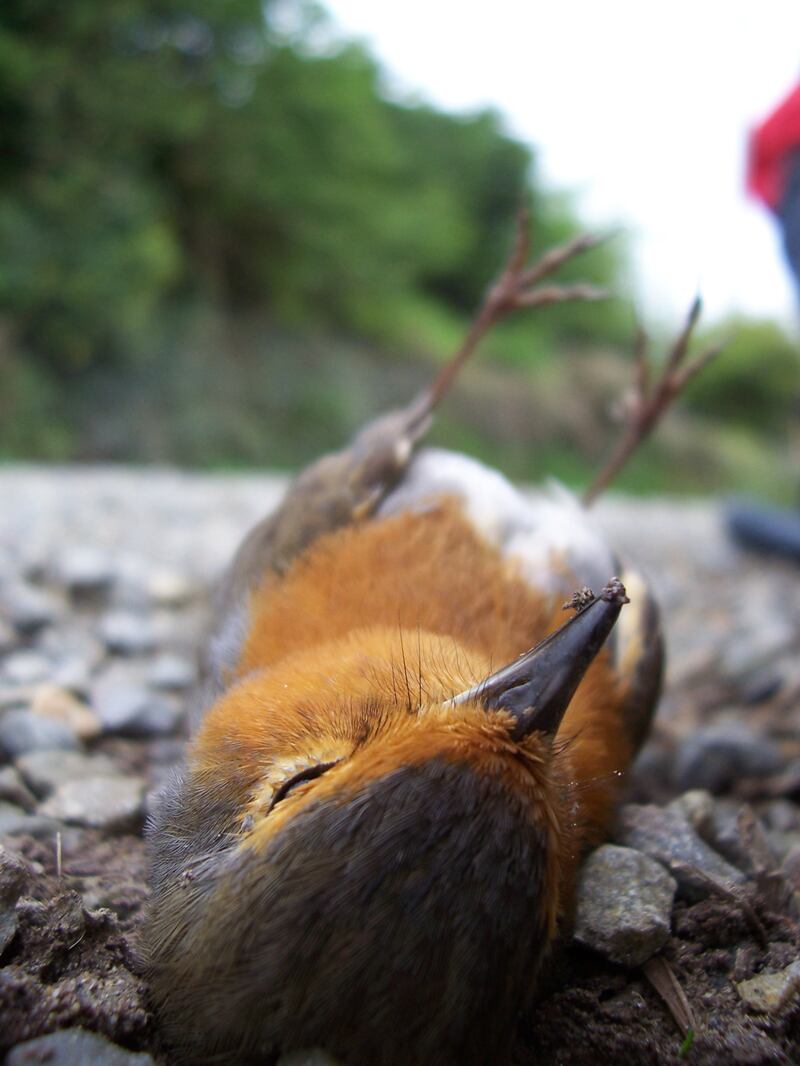"Thinking," Rebecca Solnit wrote in Wanderlust: A History of Walking, "is generally thought of as doing nothing in a production-oriented society, and doing nothing is hard to do. It's best done by disguising it as doing something, and the something closest to doing nothing is walking."
One of my more specific fears: that I will go lame.
A photograph of me and my sister as little children: in gumboots and puffy jackets, lying on our bellies in the middle of the road, seduced by some indistinguishable detail, examining the chippings with solemn intensity.
We were out on what had started as a walk. My mother brought us walking at least once every day, but the object of the excursion was not so much to cover ground – to be exercised – as to look, to play. Trees were climbed, wild weeds and flowers picked, donkeys fed, chippings inspected.

“It’s impossible not to find interesting places anywhere,” Richard Long has said. Long is one of Britain’s greatest living artists. What he does might be described as environmental sculpture, as conceptual art, as land art. His website simply says: “Art made by walking in landscapes. Photographs of sculptures made along the way.”
Visible track
I've been thinking a lot about Long recently. My second novel is named after one of his most significant artworks. A Line Made by Walking was an "action" undertaken in 1967 when Long was a student in St Martin's School of Art in London. He caught a train out of the city and, in a field, walked up and down and up and down in a straight line until his footsteps had worn a visible track through the grass. Then he documented the site in photographs.
<strong>Every day, I still go out and walk – the same rutted road each morning, between hills and sea, in all seasons, all weathers. I see what has grown or died, and how the stones have moved. I recognise a new cowpat, a new piece of litter, a hole in the hedge left by a fox. I hear the chough's squawk bouncing between the humpy fields. Then I go home and try to make a something out of the nothing.</strong>
This is one of roughly 70 artworks described throughout my novel. Frankie, the narrator, is a young graduate struggling to establish an art practice. She periodically impels herself to recall the works she learned about in college in an attempt to find meaning, and to continue learning in spite of the fact that her formal education is over.
“I test myself,” Frankie says, over and over, “because no one else will, not any more . . . ”
On the brink of turning 26, Frankie is stultified by her future responsibilities. A rainbow of possibility suddenly feels more like a constriction. She also suffers from the amorphous guilt that comes attached to privilege. “The world is wrong,” she thinks, “and I am too small to fix it, too self-absorbed.”
Frankie buckles under the burden of her freedom, drops out of the city and goes to stay in the rural bungalow where her grandmother died. With nothing in particular to do, she takes Solnit’s advice, walking and cycling around the countryside as a means of subterfuge as well as an excuse for contemplation. One by one, Frankie encounters creatures who have died, which makes her feel peculiarly as if she has reached the momentous end of something.
Disneyfied expectations
My narrator’s experience is a version of my own, necessarily blended with the versions of others. Like Frankie, I once had “Disneyfied” expectations of life that burned out abruptly in my mid-20s – at which point I had to re-learn how to continue to put down the days without the reassurance of my specialness.
A Line Made by Walking (the artwork) has a particular resonance with the novel because it is about searching, and about repetition. About where we are going, and what we leave behind.

Long was born and brought up and still lives in Bristol. He rarely does interviews, but when he does, he speaks with plainness and perspicuity. He keeps the language surrounding his art, as well as the art itself, thoughtful yet clear.
“I have scale in my work in different ways,” he has said, “from a thousand-mile walk to a fingerprint.”
The first thing Long ever remembers making was a model of a river out of plaster of Paris. “It had mud banks and creeks at different levels with little inlets coming into it which I slowly filled up with water and emptied to make the tide come in and out.” He was nine or 10 years old. Now he is in his 70s, one of the world’s greatest living artists, and this was the genesis of his life’s work: a fascination for the incorruptible operation of the elements.
“At the same time as my friends were making model aeroplanes, which I had no interest in doing,” he recalled, “I made this river in the baking tin.”
Economy of means
Two years on from the publication of my first novel, and as the second is about to become a readable, dispersible entity, I think a lot about Long and everything in his work and in his manner that ought to be a lesson to me: economy of means, propriety of explanation, quietness. I am pausing for an awkward moment of reflection: all the things I wish I hadn’t said the last time around – all the things I’ve changed my mind about.
“People like me write because otherwise we are pretty inarticulate,” William Trevor once said. “Our articulation is our writing.”

Every day, I still go out and walk – the same rutted road each morning, between hills and sea, in all seasons, all weathers. I see what has grown or died, and how the stones have moved. I recognise a new cowpat, a new piece of litter, a hole in the hedge left by a fox. I hear the chough’s squawk bouncing between the humpy fields.
Then I go home and try to make a something out of the nothing.
"Leaving tracks, making trails," Richard Long said, "the evidence of my passing."
A Line Made by Walking is published by Tramp Press in Ireland and Heinemann in Britain.
















